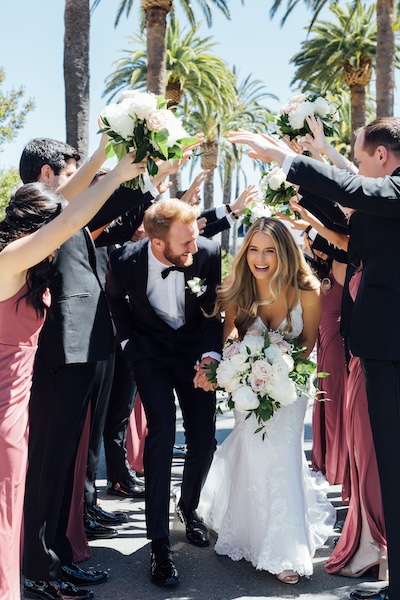Photography Business Secrets
June 3, 2013
San Francisco-based wedding photographer, educator, speaker and author Lara White (also founder of the business resource PhotoMint) gives us a sneak peek at a chapter from her new book, Photography Business Secrets, The Savvy Photographer’s Guide to Sales, Marketing, and More.
[The following text is excerpted from Chapter 16 of White’s book; © 2013 by John Wiley & Sons]
There are many ways to market your business. In the past, it was all traditional marketing like direct mail, print advertising and networking.
With the rise of social media, there are now many more ways you can market your business, often with much lower costs. The key is to figure out which methods work best for your business.
Every business is different, and what works for another photographer may not work for you. It depends on your niche, target market, personality, location and available time and money resources. That’s why it’s so important to track the effectiveness of your marketing campaigns—so you know which methods bring in business and which ones don’t.
One of the biggest mistakes photographers make when it comes to marketing is thinking that prospective clients will simply come to them.
Effective marketing means getting out there and bringing business in to you. The following is an overview of some of the strategies you can use to market your business effectively.
Traditional Marketing Methods
You’ve probably heard that if you aren’t on social media, you aren’t doing marketing correctly. While it’s true that many photographers are finding success with online marketing methods, that doesn’t mean the traditional methods are not so effective. In fact, this couldn’t be farther from the truth. Traditional marketing methods such as networking, partner marketing, and publicity are my most effective marketing tactics for Geoff White Photographers. It simply depends on your business model.
Are your clients online or are they more likely to see your work in magazines or by picking up a brochure in a partner’s retail location? Using traditional materials to direct clients to your website and blog is a great way to drive prospective clients to your online
marketing before they have officially begun searching for a photographer.
Networking
I cannot stress enough the importance of networking; it is one of the best things you can do for your business, period. In order to get results, you need to take it seriously.
We have tried many different methods of marketing, and networking is one of the very best. It doesn’t happen overnight. It starts with attending networking events, and the goal is to build strong relationships with people, which takes time and effort. The most important thing to remember with networking is that it’s about people. You can’t expect vendors to start referring clients to your business after simply handing out business cards at a networking event. And pushing your portfolio on people while they’re enjoying a martini is not the way to go either. Take your time and get to know people—show you are interested in them. When you go to networking events, the goal is to make new contacts. This usually means walking right up to strangers and introducing yourself or asking friends for introductions. It’s that hard, and it’s that easy.
After an event is over, it is important to follow up. Hopefully, you met several people in your industry. Here are some options for following up with a new contact:
- Phone or email the next day and invite them out for drinks or lunch.
- Send a handwritten note with your brochure, letting them know you enjoyed meeting them and look forward to working with them in the future.
Networking is a great tool to grow your business if used correctly. If you are shy and can’t bring yourself to talk to people at events, networking might not work for you. If you don’t actively follow up with contacts after meeting them, networking is going to be a much slower process. Remember, you aren’t going to these events to kill time and have cocktails; this is a serious marketing strategy to grow your business and develop contacts into relationships. It’s up to you.
Fairs, Shows and Events

An example of photographer Geoff White’s successful booth setup at a bridal fair.
Bridal shows, baby fairs, county fairs, pet adoption events, arts and craft fairs, and community festivals are all places you can exhibit your work and meet with prospective clients. This type of marketing often requires an investment in the booth design, space rental and marketing materials to hand out. Here are some fairs and shows to consider, based on your niche:
- Pet shows and events
- Baby fairs
- Bridal shows
- Fine art exhibits
- Lifestyle and gift expos
- Women-focused expos to promote boudoir photography
- Back to School Nights for senior photography
- Customer events in boutique retailers
- Wedding fairs at local venues
Studio Events
For studio photographers, studio events are a great way to generate buzz in your community and get people into the studio to see what you have to offer. Chamber of Commerce mixers, high school senior events, a client holiday party, a boudoir-a-thon, and Halloween pet portraits are a few ideas. To make your event successful, consider having mini sessions on site, goodie bags and a fun atmosphere.
Partner Marketing

Consider cross-marketing and partnering up with another business, where each business pools resources to help one another get new business. The idea is simple and can offer benefits.
The reason this works well for small business is that each business benefits from the other’s marketing, products and services. If you choose a business with clients likely to be interested in your services as well, you’ve got a great potential match.
Find businesses targeting the same clients you are, but for other products or services. For example, you could approach a children’s clothing store about offering a photo shoot with their lasting clothing collections, perhaps even featuring the kids of their best customers. In exchange for the co-marketing and access to clients, you could offer the store-owner images for a direct mail campaign or wall prints at cost. This concept can be applied to any type of photography.
Boudoir photographers can team up with makeup artists and lingerie boutiques. Pet photographers can find ways to partner with grooming services, pet stores, and so forth. It’s all about being creative and putting your marketing money and energy to good use.
Wedding photographers should network and build relationships with venues, planner, florists, caterers, and other industry professionals.
Referrals and Word-of-Mouth Marketing
Happy clients can help you grow your business by referring friends and relatives. What better way to thank them and encourage referrals than by offering an incentive? You want to offer clients something of value (something such as a service or product that has high perceived value) but that doesn’t cost you much.
To build a solid referral stream of business, let your clients know through repeated messages how much you appreciate their referrals. When you say things like, “my business is based on referrals from happy clients,” and, “the greatest compliment you can give me is a referral,” you are letting your clients know what you would like them to do for you. Of course, it takes time to build up a good base of referrals.
Charity Marketing
Giving back to your community is good for you and your business. Showing that you care about your community, or a specific cause, can go a long way in fostering good will and support. Plus, it helps get your name out there, which is great marketing.
There is a difference between doing charity work and charity marketing. Charity work is done without expectation for any kind of a return or marketing value for your business. Charity marketing is a collaborative effort where you are working with a charity for both altruistic reasons as well as potential benefits to your business.
As with many marketing strategies, it may take time to find the right technique and the right charity to work with. You can start by approaching the charity with an offer to donate services to an auction or provide event photography for community events.
To get the most from partnering with a charity, keep the following in mind:
- Passion. Work with a charity you are passionate about. This will create a great synergy between you and the charity.
- Pick the right charity. Choose a charity that is a good match for your services. For example, if you are a pet photographer, working with a dog rescue makes sense.
- Stay with it. It will probably take more than one event to show some return. Follow up to improve the results.
- Branding. Make sure your logo is featured on your work and in any related marketing showing your work.
- Keep records. Track the time, money, and other expenses tied up with the charity, for tax purposes.
Photography Business Secrets (Wiley, March 2013) is currently available on Amazon in paperback.
Bridal Fair Tips
Some things to keep in mind to have a successful bridal show:
Booth position is key
There are certain booths you do not want to be next to: DJs (too loud, tends to drive people away), bakeries (people will skip over you to get to free cake), and tuxedo rentals (they tend to bring an army of people to steal every client who comes down the aisle). Some of the best spaces are corner booths (you’ll get cross traffic) and in the middle. Spaces near the entrance tend to be ignored,
as people are just getting into the show.
Come armed with handouts
Have your best marketing materials ready. Make sure your brochure stands out and isn’t just a photocopied price sheet. You never get a second chance to make a first impression.
Network with other vendors
During bridal shows, there is usually a fashion show or a period when the expo is slow. Use this downtime to network with vendors, and even other photographers. Set up your booth early so you can walk around and meet with other vendors.
Book then and there
Have your calendar ready and suggest brides book a consult with you then and there. Have contracts on hand so you can book on the spot if the opportunity arises.
Follow up
After all the work and expense of being at the show, follow up with every lead. Have brides fill out contact cards with name, email, phone, address, date and location (ask only for what you need), and use the back of the card to jot down notes after talking with them. You might offer a complementary engagement session for couples filling out the card, or have a drawing, and these sessions can lead to bookings or more work for your portfolio.
Books to Help You Become a Networking Ninja:
How To Win Friends and Influence People
by Dale Carnegie
Networking for People Who Hate Networking: A Field Guide for
Introverts, the Overwhelmed, and the Underconnected
by Devora Zack




